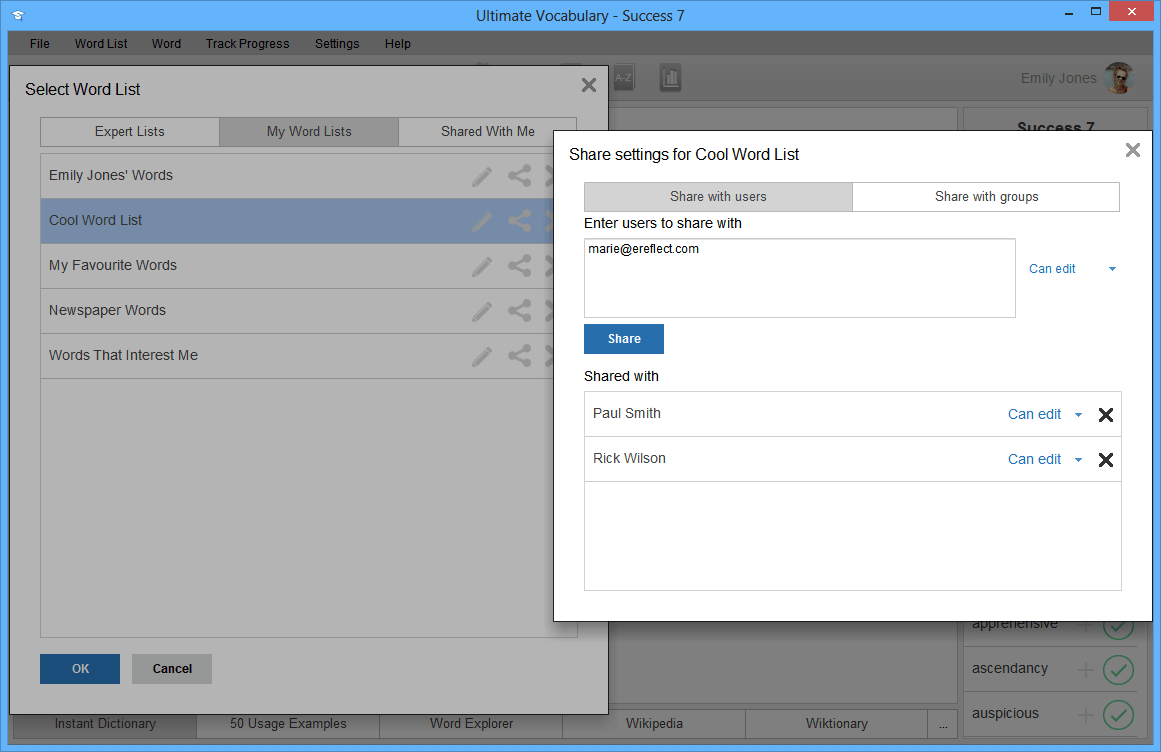


“That’s exactly what we mean when we say AI is becoming a platform,” he said. “By now most people intuitively understand how personal computers are a platform - you buy one and it’s not like everything the computer is ever going to do is built into the device when you pull it out of the box,” Scott said. The goal, Microsoft says, is to make its large AI models, training optimization tools and supercomputing resources available through Azure AI services and GitHub so developers, data scientists and business customers can easily leverage the power of AI at Scale. Earlier this year, it also released to researchers the largest publicly available AI language model in the world, the Microsoft Turing model for natural language generation.
#ULTIMATE VOCABULARY BUILDING SOFTWARE DOWNLOAD CODE#
This type of model can so deeply absorb the nuances of language, grammar, knowledge, concepts and context that it can excel at multiple tasks: summarizing a lengthy speech, moderating content in live gaming chats, finding relevant passages across thousands of legal files or even generating code from scouring GitHub.Īs part of a companywide AI at Scale initiative, Microsoft has developed its own family of large AI models, the Microsoft Turing models, which it has used to improve many different language understanding tasks across Bing, Office, Dynamics and other productivity products. Machine learning experts have historically built separate, smaller AI models that use many labeled examples to learn a single task such as translating between languages, recognizing objects, reading text to identify key points in an email or recognizing speech well enough to deliver today’s weather report when asked.Ī new class of models developed by the AI research community has proven that some of those tasks can be performed better by a single massive model - one that learns from examining billions of pages of publicly available text, for example. “This is about being able to do a hundred exciting things in natural language processing at once and a hundred exciting things in computer vision, and when you start to see combinations of these perceptual domains, you’re going to have new applications that are hard to even imagine right now,” he said.

“The exciting thing about these models is the breadth of things they’re going to enable,” said Microsoft Chief Technical Officer Kevin Scott, who said the potential benefits extend far beyond narrow advances in one type of AI model. It’s also a first step toward making the next generation of very large AI models and the infrastructure needed to train them available as a platform for other organizations and developers to build upon. It represents a key milestone in a partnership announced last year to jointly create new supercomputing technologies in Azure. Microsoft has built one of the top five publicly disclosed supercomputers in the world, making new infrastructure available in Azure to train extremely large artificial intelligence models, the company is announcing at its Build developers conference.īuilt in collaboration with and exclusively for OpenAI, the supercomputer hosted in Azure was designed specifically to train that company’s AI models.


 0 kommentar(er)
0 kommentar(er)
